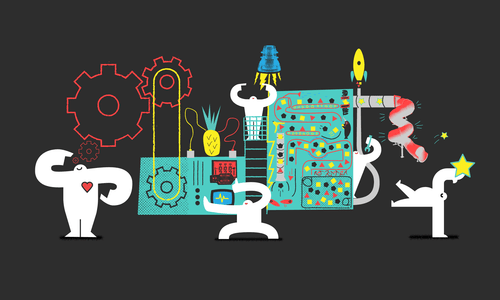
Ideal Customer Experience
Ideally, requesting help and submitting ideas would be part of a unified experience of collaborating to make things better.
Wherever builtin product help is lacking or too hard to find, options to seek direct assistance should present themselves. From here, a good customer experience depends on an intuitive ticketing system where the request for help is clearly acknowledged and tracked through to completion, as well as clear and consistent standards of care being managed and communicated clearly from customer service representatives.
Reliable support
Reliable support is about building trust by consistently keeping commitments. When product users don’t have clear and consistent communication with the Support team, they will be left to wonder if they are being treated appropriately. This will inevitably lead to sometimes feeling misunderstood, ignored or forgotten. Whether true or not, trust will decrease each time, leading to an increased negative outlook on the relationship and product. Trust is substantially harder to restore than to lose.
Users of our product need to see that communication is consistent, efficient, and accurate so that:
- They develop trust in the product relationship as reliable and dependable
- They don’t feel they are wasting their time or budget
- They see that they are our priority in the support relationship
As a business, we need to provide communication that is consistent, efficient, and accurate so that:
- We show that we listen to and understand our customer
- We increase our users trust in us and the product as reliable and dependable
- We show that we hold our customers as our priority
Requesting help
Product users who feel stranded when in need of help, either when needing to request help or when seeking info on an ongoing request, will most certainly give up on the product.
Users of our product need to always be able to request help or track status of an existing help request so that:
- They develop trust in the product relationship as reliable and dependable
- They see we are accountable to our product
- They see that their request is heard and acted on
As a business, we need to provide an ever present and responsive mechanism, with clear and consistent standards of care to receive and track customer help requests so that:
- We show that we are keeping our commitment to sustaining a quality product
- We increase our users trust in us and the product as reliable and dependable
- We show that we listen to user requests and act on them
Submitting ideas
Ideas can come in through a variety of channels: forms, email, and as part of help requests. Ideally these submissions would be integrated with our Service Desk and processed out as escalated feature requests. When the customer submits their request, it should be mapped to a common request type, which can have a known solution path, or escalated out as a feature request.
Maintaining a sustainable pace
On the development team building the product, continuing to build the right thing means new items will continually be entering the Backlog. Jira has a couple great ways to assist with streamlining these ideas coming in from stakeholders and customers alike. Less active backlogs could use Jira Issue Collectors to add issues straight to the bottom of a Backlog, from a webform, for consideration by the Product Owner. If a Backlog is more active, or communication with the issue’s submitter is desired, the project would likely benefit from initial triaging by agents in a Jira Service Desk Project.
Our product can link to our Service Desk help center, which can be configured with common support scenario request types for our customer to choose from. Service Desk integrates with Confluence for its knowledge base and shows available matching help content to customers as they are deciding on creating their request. This can cut down on requests for help as it can solve issues preemptively. Otherwise, the request will get through, mapped to one the configured request types. Those issues can get resolved right in a Service Desk issue queue appropriate to its request type by the appropriate support agent, or they can be escalated out to the proper development team’s backlog for consideration by the Product Owner. Automation between the linked issues is available to keep them in sync. Service Desk functions as a Queue system designed for triaging issues and has configurable SLA metrics and reporting, as well as Customer Satisfaction rating and reporting built in. It makes for a nice interactive buffer in front of highly active Backlogs.
Maintaining focus and priority
The Service Desk method helps the development team keep a sustainable pace by not overwhelming them with too many unplanned requests, but also improving the quality of the requests that do make it to their backlog. This let’s the development team stay focused on their work as their priority while their customer’s needs and feedback stay close by. This method also lets the customer be a priority in their relationship with the Service Desk agents skilled at solving the common scenarios and escalating the complex requests while setting good expectations. Further, we can measure the success with the customer satisfaction tracking.




